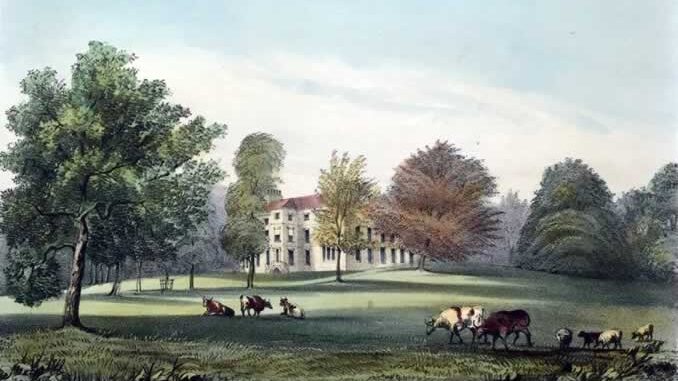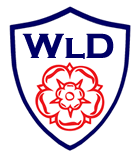
Walton Lodge
Walton Lodge was large property and estate that was once situated at the top of what we now know as Chruch Brow, in Walton le Dale, which leads onto Cuerdale Lane. In some cases, it was referred to as Cuerdale Lodge. The property was originally created by Mr. Richard Calrow. It is said that the mansion of the Calrows at Walton Lodge was built partially of the bricks brought from the demolished Mosney works.
CALROW OF WALTON LODGE
Richard Calrow of Adlington, Co. Chester, was father of Richard Calrow of Bury, Co. Lancaster, who purchased the Walton Lodge estate in this township. The son, Richard Calrow, Esq., of Walton Lodge, had sons, William ; and Thomas Calrow, Esq., of Woodhill, near Bury. He died, aged 71, in 1830, and was buried at Walton Church.
The Mosney firm of calico printers extended their works, and for some years prosecuted a flourishing business, and bore a high reputation in the trade ; but a succession of pecuniary losses very much shook the credit of the concern, and resulted at last in the suspension of business. The bankruptcy of the firm was announced in the year 1788. The works at Mosney were stopped, and do not appear to have ever been re-started. After lying idle a few years, the buildings at Mosney were demolished, and the machinery taken out of them. Mr. William Assheton, of Cuerdale Hall, bought the site from the executors of Thomas Livesey, in 1792, and sold it to Mr. Richard Calrow about 1797. It is said that the mansion of the Calrows at Walton Lodge was built partially of the bricks brought from the demolished Mosney works.
The only vestiges now to be seen of the once extensive arrangements for calico-printing at this spot are a portion of an old wall, and remains of the brick culvert constructed for turning the water used in the works into the River Darwen. Mosney estate is still the property of the Calrow family. An informant mentions that the Liveseys had bleach-works at Bamber Bridge, and also a cotton mill at Higher Walton, which was purchased by Rodgett Brothers about 1859, and afterwards pulled down and a new mill built. Mr. Thomas Livesey resided at Knott House, and died there ; this house had previously been the residence of Mr. Anstie, one of the masters of the Mosney print-works ; Mr. Hall, another partner, resided at Darwen Bank, now the property of Mr. Rodgett. Knott House was since the mansion of Edmund Calvert, Esq.
However, it appears that its life in the ownership of the Carlows was relatively short. Below is an interesting advertisement for an auction that took place on Wednesday 25th November 1812.
The following is an illustration (a Lithograph) of Walton Lodge, Lancashire, The Seat of William Calrow Esq, 1846. It was lithographed and printed by C J Greenwood for ‘The Mansions of England and Wales, illustrated in a series of Views of the Principal Seats in the County of Lancashire’ by Edward Twycross. This would suggest that the estate of Walton Lodge was bought by Richard Carlow at the 1812 auction and that he built the main house either in addition to, or in place of building that were already there.
The following maps, which are taken from 1848 Ordnance Survey Maps that are available on the National Library of Scotland website, shows the estate and the three main properties that were up for sale in 1812. These were Walton Lodge, Osbaldeston House and Sallom House.
The next maps, again taken from the National Library of Scotland website, show a comparison between 1848 and the early twentieth century. By then Walton Lodge had been demolished and replaced by a row of house named ‘The Drive’. These new house were built in 1899.
The auction was held at the Red Lion Inn in Preston. However, coincidentally, there was also a Red Lion Hotel just down the road from Walton Lodge at the time. The property that was once the Walton le Dale Red Lion Hotel public house was built in 1763. It not clear if it was built to be a Hotel and Public House initially, or whether the building served another purpose originally. The building survives, it is a private residence, and is now known as Red Lion Cottage.
Osbaldeston House stands near the road leading from Walton Church (Saint Leonard’s) to Moon’s Mill (an earlier name for Higher Walton). It was rebuilt in 1661 by William and Dorothy Osbaldeston, as recorded by their initials and the date on a stone over the porch.
Sallom House Farm exists today, and there appears to be a building in the location occupied by Sallom House. This is possibly the same (original) building.
More about the Historical Buildings in and around Walton le Dale can be seen on the Historical Buildings page.
